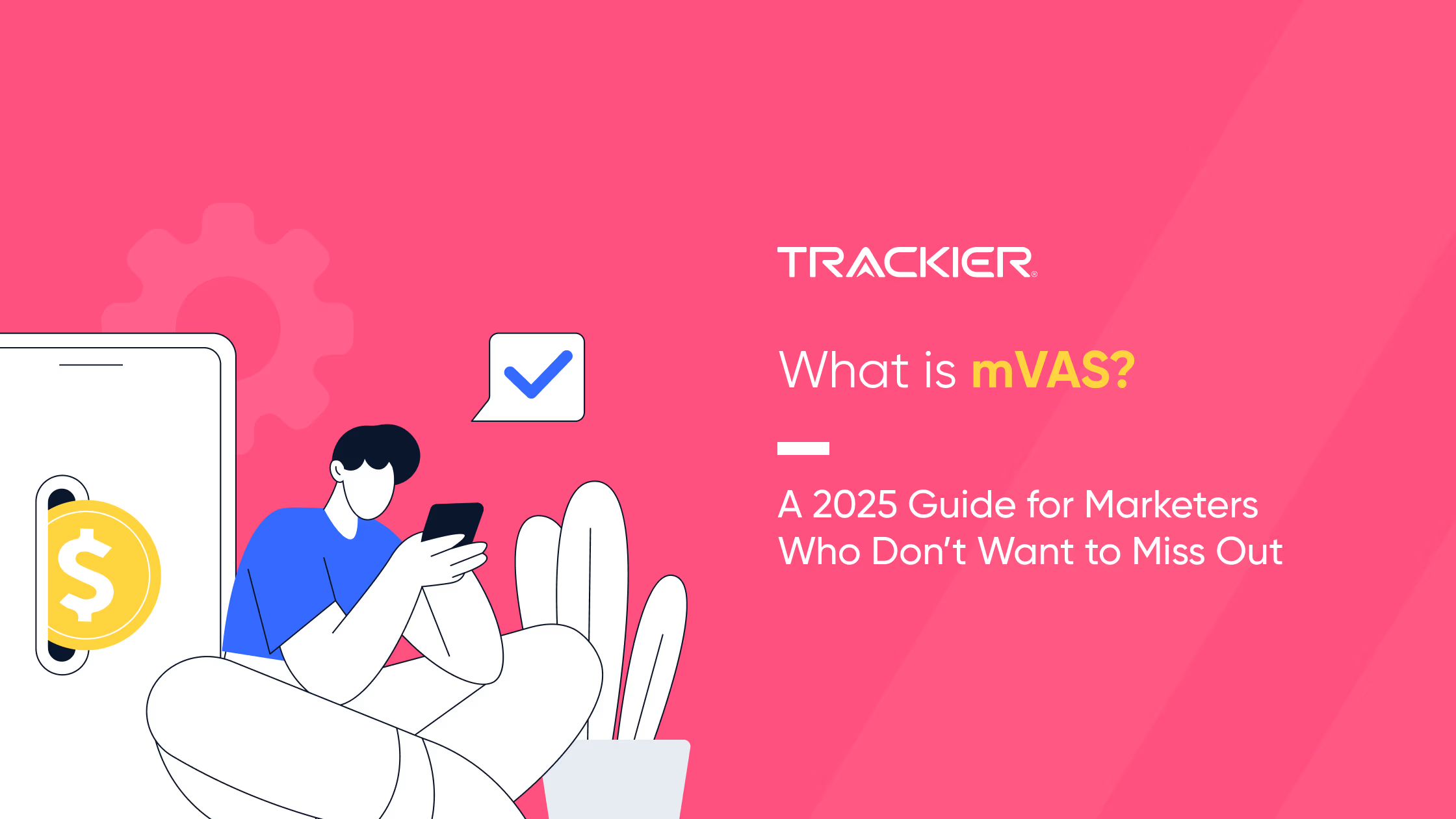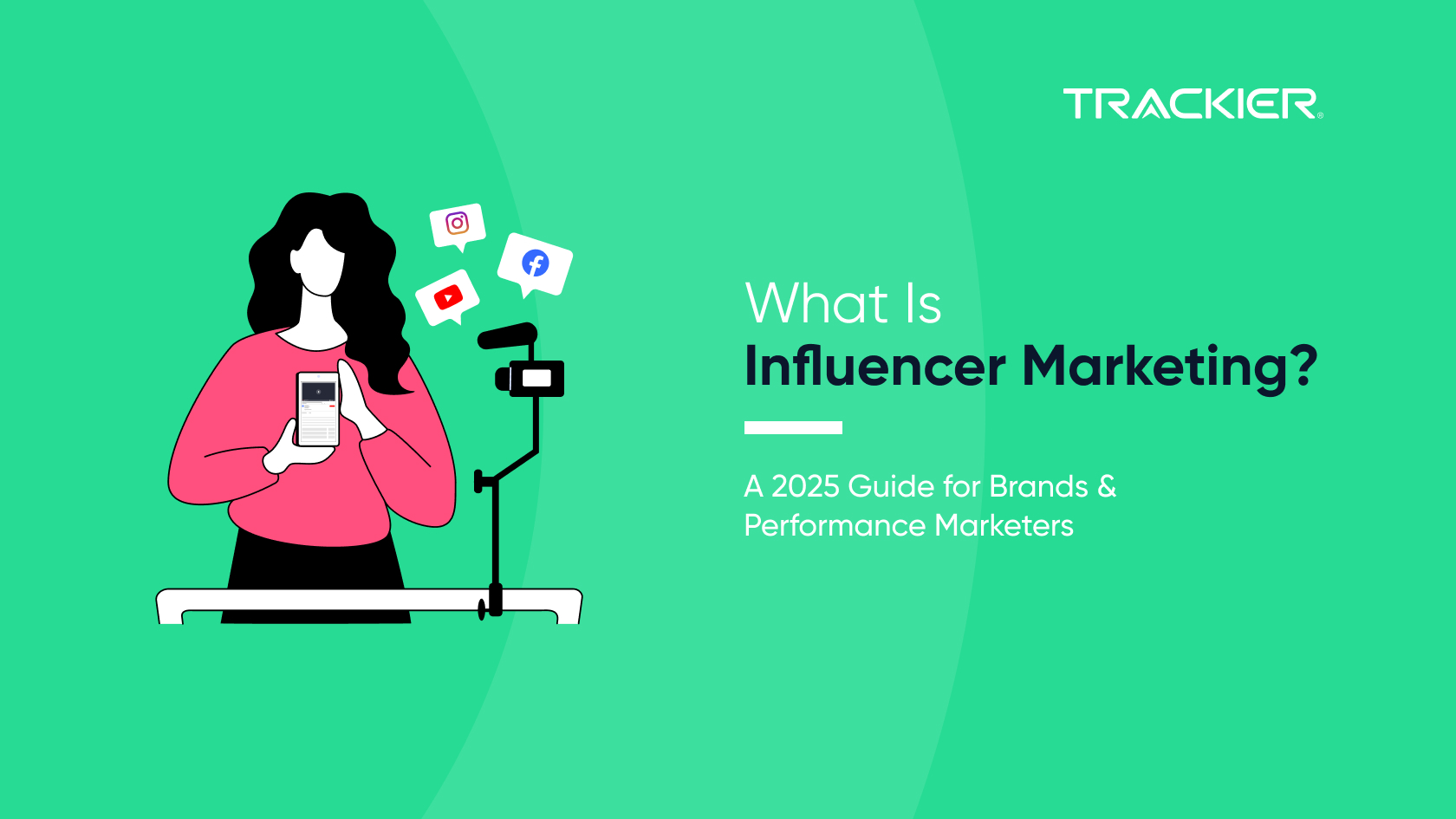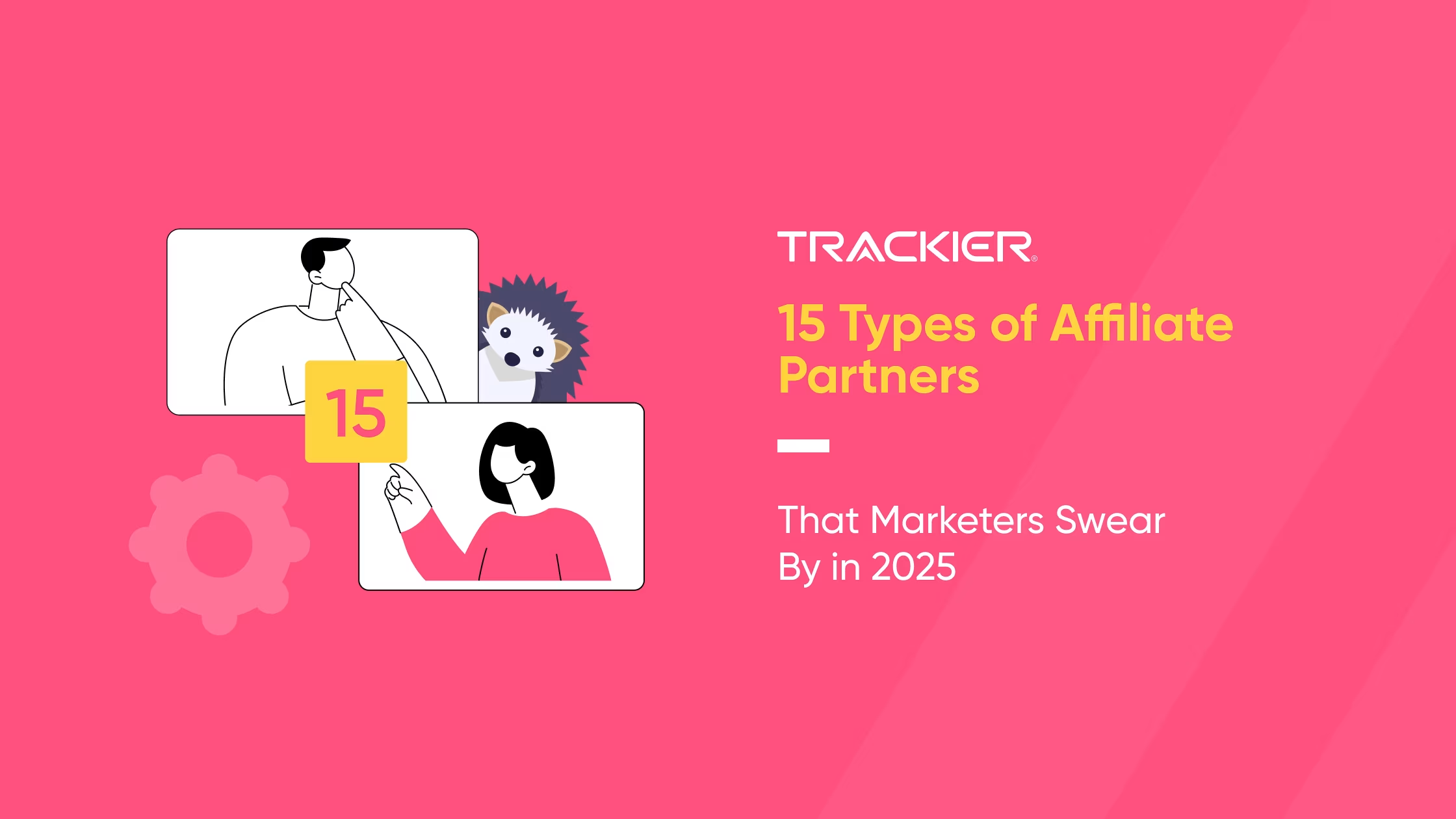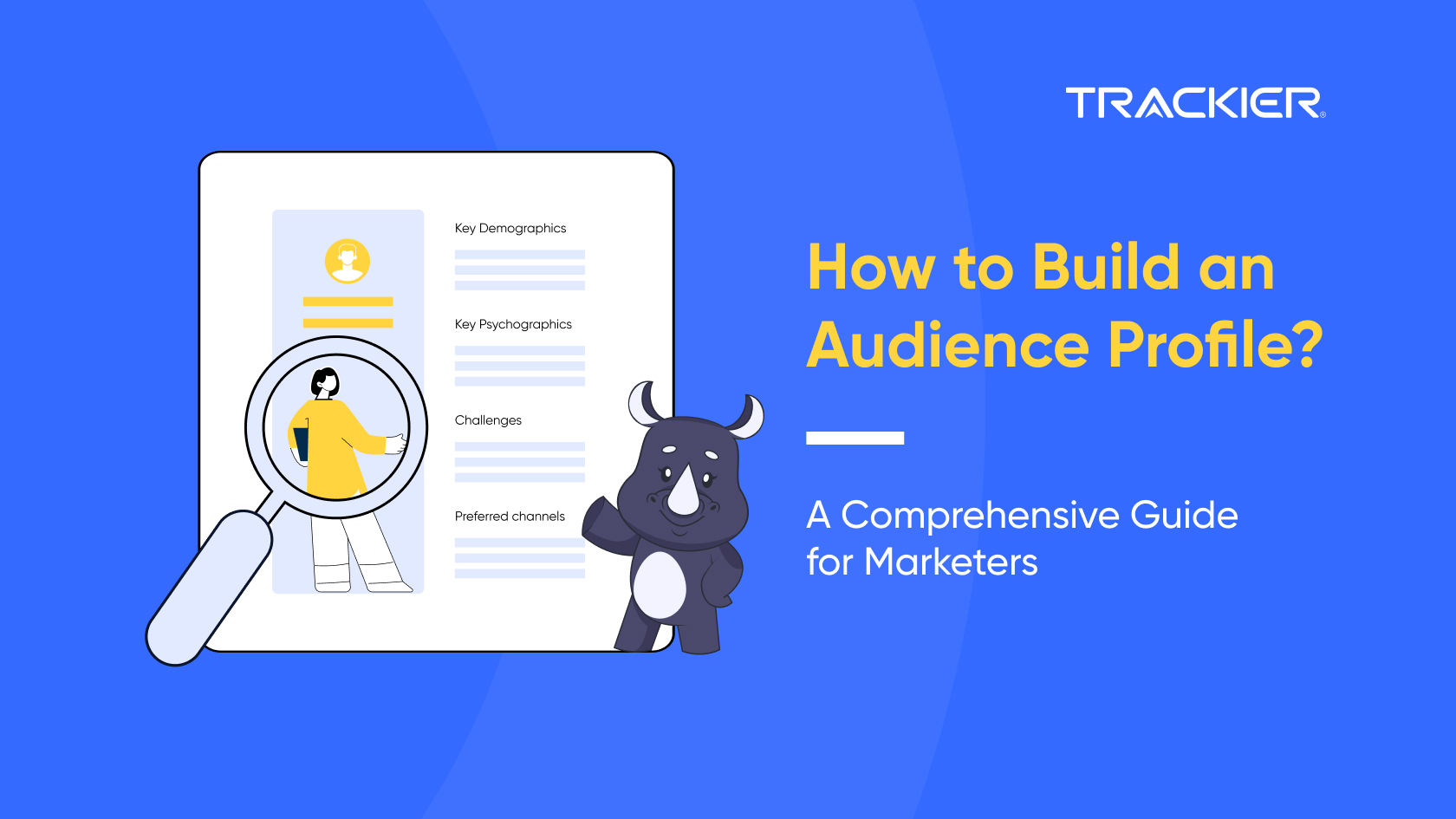If you’re still wondering what is mVAS, you’re not alone. Platforms like Trackier’s partner marketing software now fully support mobile value-added service campaigns with end-to-end tracking.
Mobile Value-Added Services, or mVAS, have evolved from basic telecom features into powerful marketing tools. These offers let users subscribe to small content packages using just their phone number. No app installs, no credit cards, no friction.
In markets like Southeast Asia, Africa, Latin America and the Middle East, users prefer mobile-first experiences. They don’t always install apps, but they are open to paying for value through their phone bill. That makes mVAS a huge area of opportunity.
What is mVAS or Mobile Content Offers
Mobile Value-Added Services or mVas are digital content subscriptions billed directly through a user’s mobile operator. Content can include daily tips, audio files, trivia, or region-specific clips. The payment shows up on the user’s phone bill or prepaid account.
This model opens a pathway to users who are hard to reach through app stores or card payments.
They still want value, but need quick, easy access. And mVAS delivers exactly that.
Typical mVAS Funnel: Step-by-Step
– User clicks on a mobile ad promoting a content offer
– They enter their mobile number on the landing page
– They receive an OTP (one-time password) via SMS
– They enter the OTP to confirm their subscription
– The subscription is activated and content delivery begins
– Marketer earns a payout for every verified subscription
At its core, mVAS works by piggybacking on something called Direct Carrier Billing (DCB).
That’s just a practical way of saying users get charged directly through their mobile operator. No credit cards. No wallets. Just a phone number and a PIN. This is the tech layer that powers most mobile content subscriptions. And because it skips traditional app-store or banking requirements,
DCB makes value-added services available to a much wider audience.
Behind the scenes, DCB works through a network of telcos, aggregators, and content providers. Aggregators handle the heavy lifting, like routing PIN requests, syncing billing confirmations, and ensuring regulatory compliance, so marketers can focus on campaigns, not tech headaches.
It’s also growing fast. The global DCB market topped $54 billion in 2022 and is set to cross $74 billion by 2026. That’s thanks to the rising demand for micro-subscriptions: wellness clips, daily tips, short games, and more.
So when you ask “what is mVAS”, you’re really asking how mobile content, telco billing, and user behavior come together.

The Evolution of Mobile Value-Added Services
VAS in mobile has come a long way. What used to be shady ringtone add-ons is now regulated and transparent. Telecoms and regulators insist on clear consent. Most mVAS offers require users to enter a PIN, ensuring they know what they are signing up for.
Today’s mVAS services extend beyond simple ringtones. They include mini wellness courses, short videos, quizzes, and regional lifestyle updates. Platforms like Trackier provide full visibility into every step, from click, to OTP sent, to verified subscription.
This transparent tracking means marketers can optimize flow, reduce churn, and boost conversion rates. mVAS has gone from gimmicky to genuinely scalable.
How to Start Using mVAS Offers
Launching a mobile content offer starts with finding the right partner. You can work with aggregators or content providers offering geo-specific services.
Once you have an offer, use a platform that supports mVAS tracking. Trackier simplifies setup by handling APIs like Send PIN, Verify PIN, and advertiser status checks. This seamless infrastructure means you don’t need tech teams building complex pipelines.
Next, create mobile-friendly creative with visible billing information and a clear value proposition. Run it through push, native ads, or web search. The key is speed and relevance. Users need to tap, subscribe, and start consuming content in under a minute.
As the campaign runs, watch Trackier’s dashboard. You get real-time metrics on clicks, opt-ins, failures, and successful subscriptions. When you notice a drop in conversions, you can quickly tweak your landing page, pre-landing messages, or even the offer itself.
mVAS Affiliate Marketing in Action
Affiliate marketing is all about finding channels that convert quickly, scale easily, and bring measurable returns. mVAS checks all three boxes, especially in mobile-first regions where traditional models like app installs or card-based payments don’t always work.
What Makes the mVAS Flow So Effective for Affiliate Marketing
– A user clicks on your ad
– They enter their mobile number on the landing page
– An OTP is sent to their phone instantly
– The user enters the OTP to confirm
– Subscription is activated immediately
No apps to install, no long forms to fill, no payment gateways to pass through.
The result: higher conversion rates and minimal friction at every step
For affiliates, this model is a game-changer. You get paid for every verified subscription, often within seconds of the user opting in. And since many mVAS offers are subscription-based, there’s potential for recurring payouts if the user stays active.
That means you’re building a stream of passive income from each campaign.
mVAS is also growing fast. As telecom operators partner with content providers, more services are being introduced across regions like Southeast Asia, the Middle East, Africa, and Latin America.
These markets are full of mobile-first users who may not be reachable through apps or credit cards but are comfortable paying through their mobile balance.
Matching mVAS Content to Your Audience
Not all content lands the same way. What gets clicks in India might completely miss in the US.
And if you’re running mVAS campaigns without matching your content to the local context, you’re basically aiming in the dark.
Let’s break this down with real examples:
- Brazil: Football is serious business. Score updates, player trivia, or video highlights during league season see crazy opt-ins.
- Indonesia: The youth population is glued to mobile video. Here, short audio and visual snippets outperform text-heavy offers.
- Nigeria: People respond to motivational content in local dialects, for instance, career tips or spiritual messages via audio.
- Bangladesh: Religious SMS updates around key festivals or daily prayers drive better engagement than general entertainment content.
- Regions with lower literacy: Stick to audio and visuals. SMS-only offers in English or formal text usually fall flat.
So while the “VAS” in value-added services could be anything, it works best when it feels personal. If your offer doesn’t connect culturally or contextually, users churn faster than you can say “unsubscribe”.
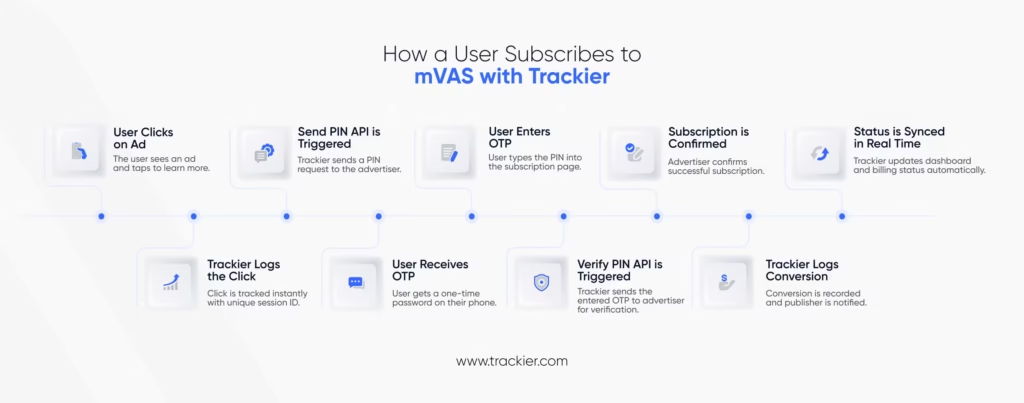
mVAS CPA Explained for Marketers
In mVAS, revenue is tied directly to verified subscriptions. Once a user confirms via PIN and the charge goes through, you get paid. That means you are working with high-intent actions.
Here are example payouts:
- India: ₹15 to ₹25 per subscription
- Nigeria: $0.20 to $0.50
- Brazil: $1.00 to $2.50
- Indonesia: $0.30 to $0.80
- UAE: $0.50 to $1.20
To maximize returns, content must deliver ongoing value. That means lifestyle tips in Portuguese, health reminders in Indonesian, or daily fitness prompts tailored to your audience.
Trackier helps you test different versions of content and region-specific creatives. With performance data segmented by campaign, carrier, and publisher, you can invest where the ROI is strongest.
How Trackier Supports Your mVAS Campaigns
Trackier is purpose-built for modern mVAS flows. Unlike traditional affiliate platforms that depend on pixels or postbacks, Trackier uses a robust, API-first integration model. This ensures accurate tracking, secure data transmission, and full transparency across the funnel.
Let’s break down how it works and what makes it marketer-friendly.
Step 1: Event Begins When the User Clicks
It all starts when a user clicks on your ad. Trackier immediately logs this click and triggers what’s called the Send PIN API. This API connects to the advertiser’s backend or an aggregator like Domantra. The user then receives an OTP on their phone.
Trackier records this click as an event. That gives you visibility into where the user entered your funnel and what ad or publisher led them there.
Step 2: OTP Verification and Real-Time Conversion Tracking
Once the user enters the OTP, the Verify PIN API is triggered. This confirms whether the OTP is valid. Trackier logs this as a conversion only after successful verification.
At the same time, the advertiser’s systems are contacted using PIN Validation APIs. If verification passes, Trackier updates the dashboard with a confirmed conversion, in real time.
This setup allows you to track every step of the process. You get full visibility from click to conversion and can pinpoint where users drop off or convert.
Step 3: Status Confirmation and Data Sync
Not all billing responses happen instantly. That’s why Trackier includes automated status check APIs. These regularly poll the advertiser’s server to confirm billing status. If the subscription goes through, Trackier updates your dashboard. If it fails, the lead is marked accordingly.
You do not need to build custom scripts. This sync process is built-in and real-time.
Built-in Support for Aggregators and Direct Advertisers
Trackier makes integration easier, whether you work with telcos directly or via aggregators. It supports custom API mappings, JSON payloads, and secure authentication.
You can connect with endpoints for:
- Send PIN and Verify PIN events
- Advertiser-side PIN generation
- Billing confirmation
This entire process is logged securely. Nothing gets lost between systems.
Security, Testing, and Publisher Access
Trackier supports HTTPS, token-based access, and role-level permissioning. There’s also a test environment where you can simulate flows before going live which is also useful for QA or debugging new regions.
If you work with affiliates or publishers, they can access a dedicated Trackier panel. They’ll see conversions, statuses, and payout logs in real time, reducing manual coordination.
Why This Matters for mVAS Campaign Success
mVAS campaigns rely on speed and accuracy. Delays, mismatched data, or failed billing can break your flow. Trackier solves these problems with:
- Instant API-triggered event tracking
- Advertiser-side status sync
- Full error logs and fallback handling
- Secure, real-time reporting
This ensures you always know where each lead stands and helps scale with confidence.
Learn more about the process of setting up VAS campaigns on the Trackier panel.
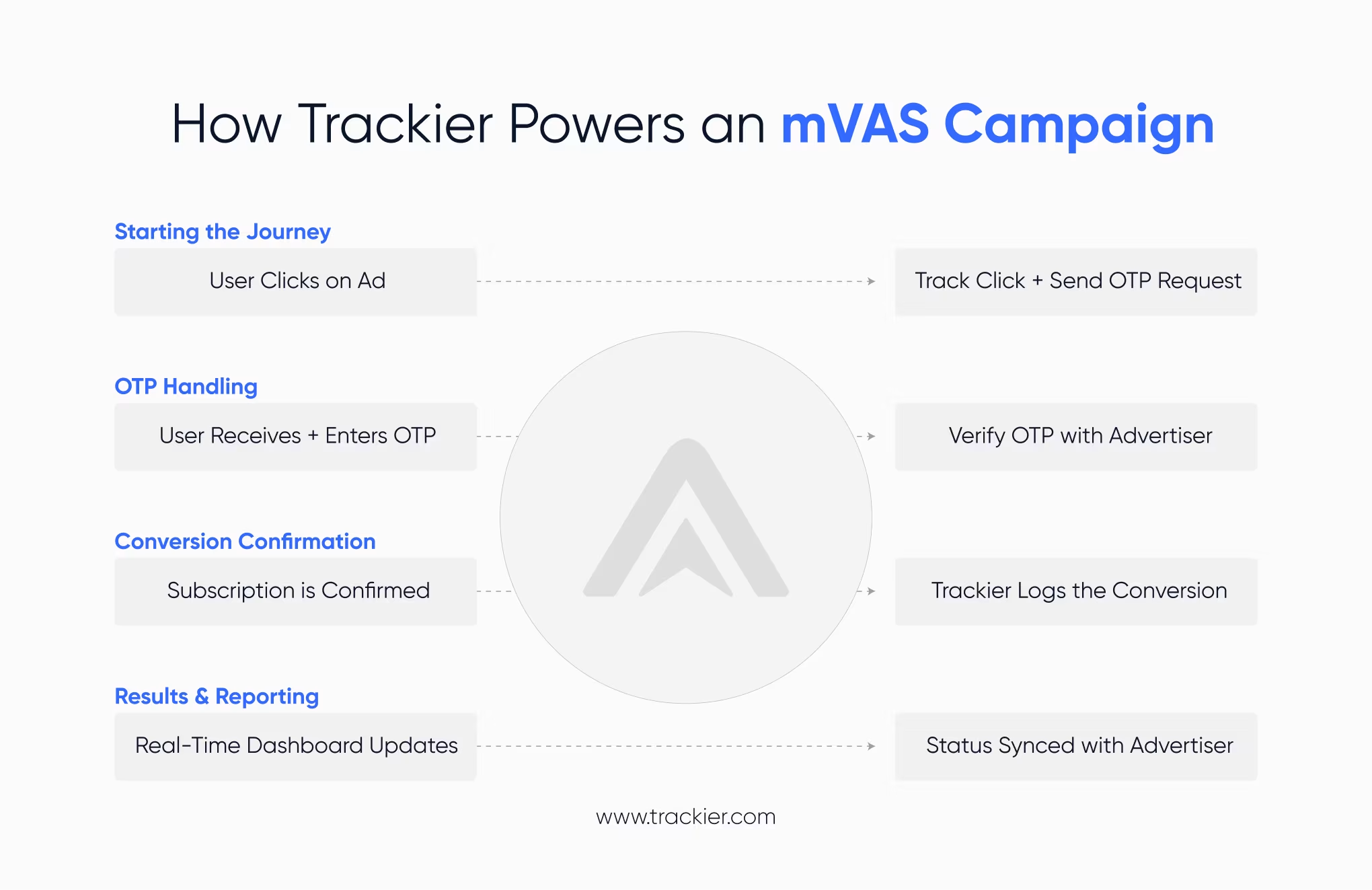
The Global Market Opportunity for mVAS
The global mobile value-added services (mVAS) market is expected to cross $1.5 trillion by 2033, according to IMARC Group. This growth is being driven by mobile-first regions where smartphone access is high but credit card usage and app installs are still limited.
In these markets, telcos are partnering with content providers to deliver daily wellness tips, local news, quizzes, and more, all billed directly to the user’s mobile balance. These micro-subscriptions often cost less than $1 per week and renew automatically, creating steady revenue streams.
For marketers, this opens up a large, untapped audience that’s reachable without apps or payment gateways. With high opt-in rates and low friction, mVAS is becoming one of the most scalable and profitable mobile monetization models available today.
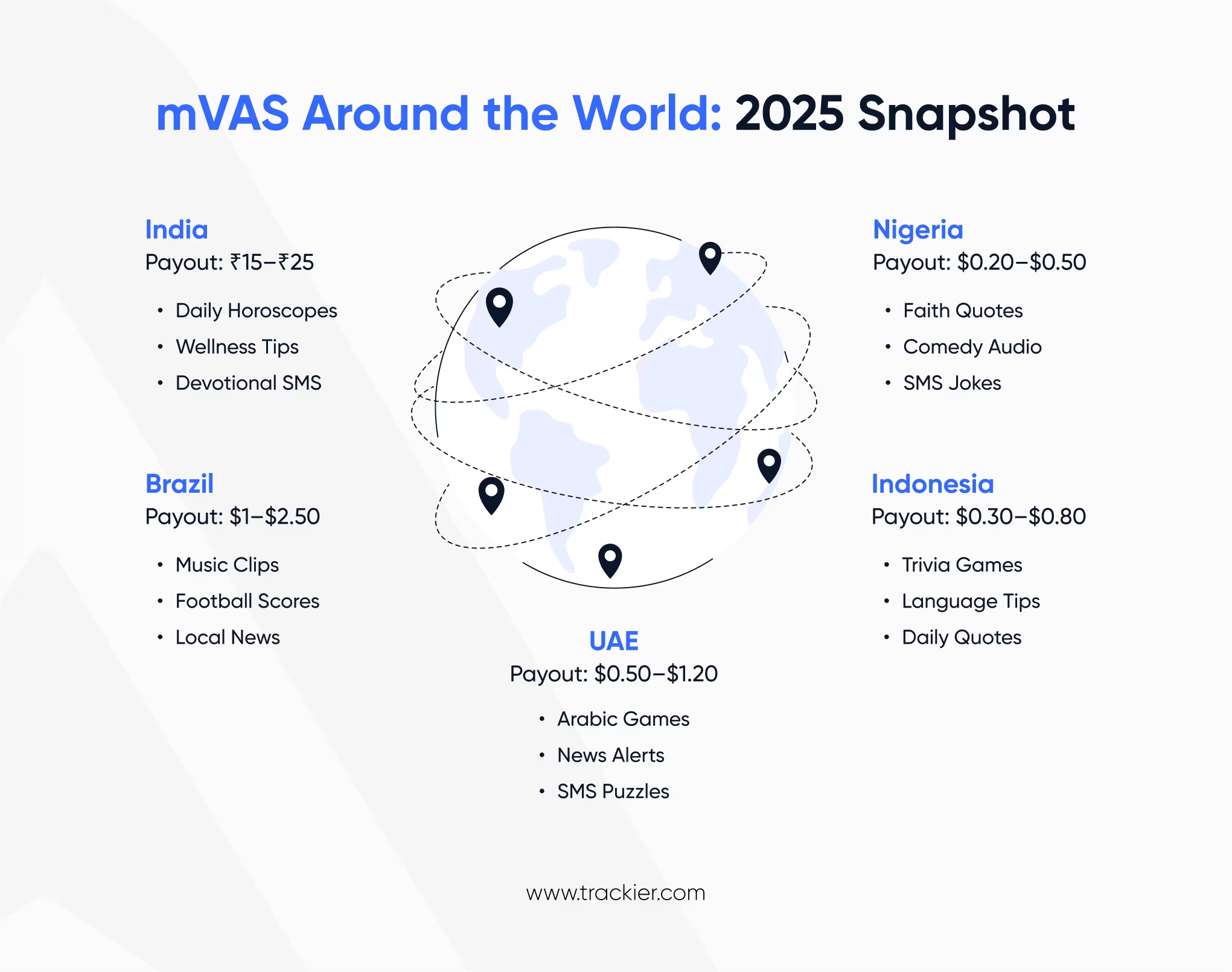
Common mVAS Challenges and How to Solve Them
Running mVAS campaigns comes with a unique set of challenges. From regulations to technical inconsistencies, there are several moving parts that can impact your performance and user experience. But with the right setup and platform, most of these can be addressed easily.
Regulatory Restrictions and Consent Requirements
Every country has its own interpretation of what counts as valid user consent, and that is something you don’t want to play around with.
- South Africa
Under WASPA (Wireless Application Service Providers’ Association) and ICASA rules, you’ll need a strict double opt-in. First, the user hits subscribe. Then, they confirm again using a PIN. Without that second step, it’s a no-go. Telcos like Vodacom actively block non-compliant flows.
- MENA region
Here, rules can be lighter. Some operators in countries like Egypt or the UAE allow single opt-in, as long as pricing is clearly displayed. That said, operators often impose their own quirks, like mandatory unsubscribe instructions or flow timing limits.
- Other Markets
Many telcos globally require:
- PINs that expire quickly and are unique per session
- Timestamped proof of consent
- Explicit language on what’s being subscribed to and at what cost
- Strict content approvals, especially for anything remotely adult, religious, or political
If you don’t get it right, best case your flow stalls. Worst case, you get flagged by carriers or hit with penalties. Always ask your aggregator what each carrier and country expects. No assumptions here.
Trackier supports customizable pre-lander and confirmation pages, so you can meet local compliance needs without hardcoding anything.
High Churn and User Drop-Off
One of the biggest problems in mVAS is early churn. Many users unsubscribe within a day or two, especially if the content feels generic or if the billing wasn’t clear at sign-up.
To reduce churn:
- Offer content previews or free trial periods before full billing begins
- Localize content for cultural relevance and language preferences
- Highlight the value of the service upfront, like what users will receive and how often
Remember, the more transparent the flow, the lower the bounce and refund rates.
API Failures or Inconsistent Advertiser Responses
Not all advertiser systems are stable. Sometimes an OTP fails to deliver, or a status confirmation is delayed. If your platform can’t handle this gracefully, you risk losing valid conversions.
Trackier solves this with:
- Built-in API retry logic for failed requests
- Caching of partial conversion data until confirmation is received
- Automated syncing with advertiser-side APIs to update statuses without manual checks
This ensures no verified subscription is lost due to system lag or timeout errors.
Traffic Quality and Fraud Risk
mVAS campaigns can be vulnerable to bot traffic or unverified leads, especially if you’re scaling through multiple publishers.
To improve traffic quality:
- Enable IP filtering to block known proxy networks or VPNs
- Set click caps or conversion limits per publisher per day
- Use mobile number format validation to catch invalid or fake submissions
Trackier’s built-in fraud detection tools help you filter traffic in real time, reducing risk and protecting your campaign integrity.
Complex Campaign Optimization
Unlike app installs or eCommerce, mVAS has more variables, including telco approval, content quality, and verification steps all affect performance.
The solution:
- Use real-time dashboards to compare carriers, geo, device types, and publishers
- Test multiple landing pages with different CTAs, flows, and languages
- Track user journey drop-off points (e.g., after number input or after OTP)
With Trackier’s session-level reporting, you get the visibility you need to tweak campaigns and scale what works.
Key Takeaways
- What is mVAS? It’s short-form digital content billed directly via mobile operators.
- mVAS is powered by Direct Carrier Billing (DCB), which lets users pay with just their mobile balance.
- Great for mobile-first markets where card usage is low, but mobile engagement is high.
- Content isn’t one-size-fits-all. Local relevance = lower churn.
- Regulatory flows vary. Some countries need double opt-in, others don’t. Ask before you launch.
- Platforms like Trackier let you track everything from PIN entry to billing confirmation without building custom infrastructure.
- You get paid per verified subscription, often in seconds. With good retention, this can turn into recurring revenue.
Want to make the most of mobile value-added services? Test local content. Check telco rules. And keep the flow simple, fast, and clean.
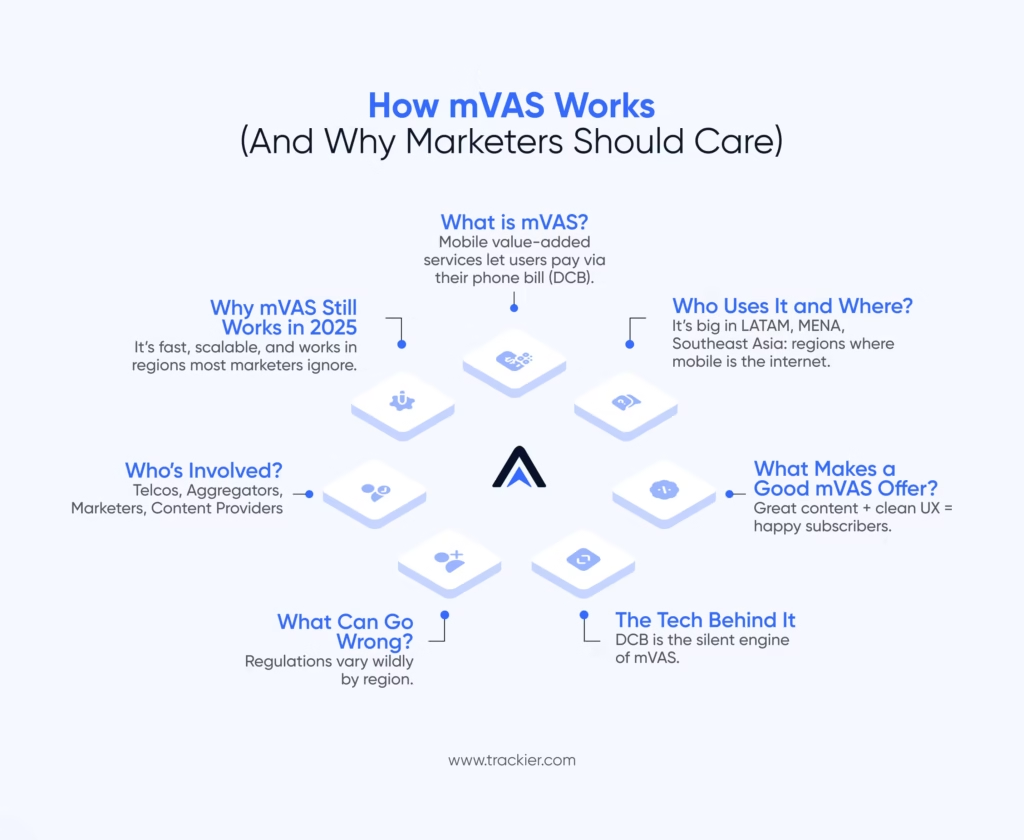
Want a weekly dose of more informational tips and bits? Subscribe to the Trackier newsletter today!
FAQs
1. How do mVAS campaigns work?
mVAS (Mobile Value-Added Services) campaigns operate on a frictionless, mobile-first flow.
A user enters their mobile number on a landing page, confirms their identity via an OTP or PIN, and is instantly subscribed.
Billing is handled through the telecom provider, meaning no credit cards or external wallets are needed. This makes it ideal for high-volume acquisition in emerging markets where digital payment infrastructure may be limited.
2. What content works best for mVAS?
The most effective mVAS content is hyper-local, habit-forming, and easy to consume on mobile.
Say, astrology updates in local languages, daily health tips, devotional music, short videos, or gamified quizzes.
Content must drive daily engagement and retention, because revenue in mVAS comes from consistent subscriber stickiness, not just one-off clicks.
3. Why is mVAS exploding now?
mVAS is reaching new heights because mobile usage has far outpaced financial inclusion in many parts of the world.
In APAC, LATAM, and Africa, millions of users have smartphones but no access to digital wallets or cards. With telco billing infrastructure already in place, mVAS enables monetisation where traditional payment rails can’t.
It’s frictionless, fast, and already integrated into daily mobile behavior.
4. What makes mVAS different from traditional affiliate marketing?
Unlike traditional affiliate campaigns that track clicks, purchases, or app installs, mVAS conversions are confirmed subscriptions billed via telecom.
That means you’re not just driving interest, you’re generating revenue from the moment a user confirms via OTP.
This creates higher intent, reduces CAC, and gives you a clearer view of LTV and churn in real time.
